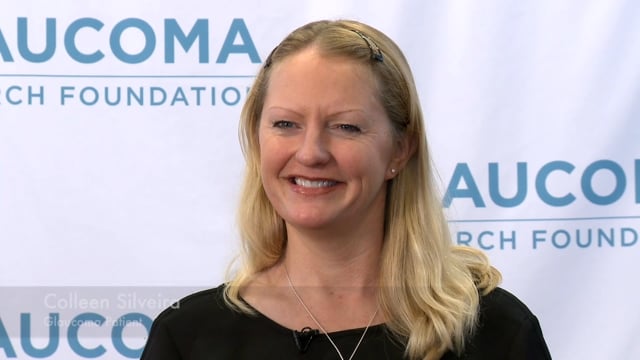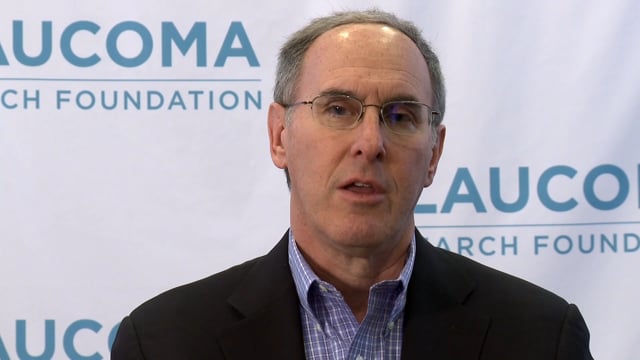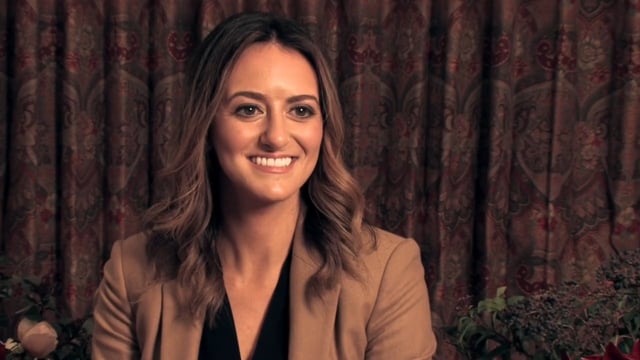Glaucoma Videos & Webinars
Glaucoma is a complicated disease in which damage to the optic nerve leads to progressive, irreversible vision loss. It is the second leading cause of blindness worldwide. Watch these videos to learn more about glaucoma.

Personal Story: Terica Roberts and Grayson
We talked with Terica Roberts and her 9-year-old son Grayson, who has childhood glaucoma. Brizette Castellanos interviewed Terica and Grayson at the 2023 Patient Summit.

Personal Story: Ginny Wright
We talked with normal-tension glaucoma patient Ginny Wright at Glaucoma Research Foundation’s 2023 Patient Summit.

Personal Story: Anne-Catherine Rogan
Anne was first diagnosed with glaucoma at age 29. Brizette Castellanos from Glaucoma Research Foundation interviewed her at the 2023 Glaucoma Patient Summit.

Glaucoma Patient EYEcon: Amy Dixon
Visually impaired professional triathlete Amy Dixon is an advocate for patient education and support.

Bianca Beach and Gary Sirak: Finding Strength and Resilience
Bianca Beach and Gary Sirak share their experiences living with glaucoma. Despite the challenges they face, they find strength and resilience in their situations.

Heather and Phillip Van Lear: A Glaucoma Patient and Caregiver share their Personal Story and Low Vision Tips
Phillip Van Lear was first diagnosed with open-angle glaucoma in 2000.

Richie Kahn Interview: Glaucoma Patient and Advocate
Volunteer Richie Kahn interviewed by Brizette Castellanos at Glaucoma Research Foundation’s 4th annual Glaucoma Patient Summit.

Ben Grass, Congenital Glaucoma Patient Story
Ben Grass was diagnosed with glaucoma shortly after birth.

A Patient’s Perspective: Phillip Van Lear’s Glaucoma Journey
This video about Phillip Van Lear’s glaucoma journey was first shown at New Horizons Forum on February 3, 2023.

Marilyn Rogers: My Glaucoma Story
Marilyn Rogers has lived with glaucoma for many years.

Colleen Silveira: My Glaucoma Story
Colleen shares her personal glaucoma story with Glaucoma Research Foundation.

David Epstein: My Glaucoma Story
David and his wife donate to Glaucoma Research Foundation to support our mission to cure glaucoma and restore vision through innovative research.

Trinh Green: My Glaucoma Story
Trinh Green is a glaucoma patient and advocate who volunteers for the Glaucoma Research Foundation in San Francisco.

Andrea Epstein – Glaucoma Research Advocate
Andrea first got involved with GRF when seeking innovative glaucoma treatments on behalf of her husband who has lived with glaucoma most of his life.

Gaye Leonard – My Glaucoma Story
Gaye Leonard shared her personal glaucoma story with us when she attended our annual Glaucoma 360 event in February 2018.

My Glaucoma Story: Rebecca Vilendrer
Rebecca shares her personal glaucoma story with Glaucoma Research Foundation.

Hannah Eckstein: Life with Glaucoma at age 17
Hannah Eckstein was diagnosed with glaucoma just a few months after she was born.

Judy Huang: My Glaucoma Story
Judy shared her personal glaucoma story with us when she attended our 7th annual Glaucoma 360 meeting in 2018.

Juanita Herrera Personal Story
Juanita Herrera has been blind due to complications of congenital glaucoma since she was three years old.

Janette Márquez Personal Story
Although visually challenged due to glaucoma from a young age, Janette showed special promise with her musical skills.

Amanda Eddy Personal Story
Amanda Eddy is a jewelry designer who was born with glaucoma.
